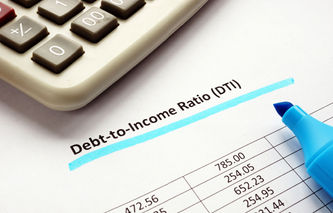A debt settlement is the result of a negotiation process that takes place between a creditor and debtor. It is one of several options that consumers experiencing a financial crisis have at their disposal.
We've touched on the topic of debt settlement briefly in our article on Debt Elimination. In this article, we'll talk about negotiating with creditors, the settlement process, documenting agreements, as well as the risk associated with this approach.
What is Debt Settlement?
In the strictest sense, a settlement is an agreement between a debtor and a creditor to pay off any remaining money owed, at a reduced amount. Settlement occurs when a creditor is satisfied that a debtor no longer has the financial ability to repay the amount owed in-full. In agreeing to a settlement, the creditor is relieving the debtor from any future obligations. This process is typically the result of negotiations.
Qualifying for Settlement
Individuals that qualify for this type of arrangement are those experiencing some form of financial hardship that prevents them from being able to fully repay their debts. Often these same individuals have already tried unsuccessfully to meet the terms of a debt management plan, or have previously sought the help of a credit counselor. Settlement is a very serious step, and usually one that is taken to avoid declaring bankruptcy.
Unsecured loans or credit are good candidates for a settlement. That's because no collateral is involved, which prevents creditors from repossessing an item of value. Unsecured debt includes medical expenses, unpaid utilities such as electric and natural gas, and credit card bills. Secured debt such as mortgages or car loans, are not generally eligible for settlement discussions.
Services and Negotiators
The settlement process is usually facilitated by a third party service provider. These providers will usually negotiate on behalf of individuals, and develop a plan which allows their clients to lower their monthly payments, and pay off their loans and outstanding bills in a relatively short period of time.
The Debt Settlement Process
The entire process usually involves several cycles of steps that are repeated until all creditors are satisfied. The steps in this cycle include:
Debtor starts saving money into a settlement fund
Negotiations take place with creditors to satisfy the account in full
Money is withdrawn from the fund to satisfy the account
This series of negotiations and payment cycles continues to repeat itself until all debts have been satisfied.
Negotiating with Creditors
Creditors are willing to negotiate only if they believe payment-in-full will never occur, or the individual is very likely to declare bankruptcy. Only in these situations will the creditor negotiate a partial payment of money owed. This means the negotiator must be equipped with enough facts to persuade a creditor, or lending institution, that a settlement is the only viable payment option. Typically, creditors will forgive between 10 and 50% of the amount owed.
For example, let's assume Ann hires a company to help with her credit card bills. She can expect them to negotiate a settlement whereby she still owes the credit card company between 50% and 90% of her outstanding balance.
It is very unlikely a company will settle for a small fraction of the money owed unless the debtor is faced with an extreme financial hardship. If a company thinks someone can pay back more, and they have access to a lot of financial information, they are going to insist on collecting more money.
Documentation
Anyone that is able to negotiate arrangements with a creditor needs the agreement in writing. Make copies of all written correspondence with the company, and send letters via registered mail so there is a receipt showing they received the letter.
Whenever there is a phone conversation write down exactly what was discussed, the date of the discussion, and the name of the person spoken to at the company. Follow up all telephone conversations with written letters to the company confirming the arrangements made during negotiations.
Remember, even if an individual abides by the arrangements, and makes all the required payments, this will show up on a credit report as "payment made," not "paid in full." This tells future creditors that not all amounts due were paid to the creditor.
Risks and Rewards
Negotiating with a creditor comes with some risks. Generally, there are four types of problems that can occur when contacting creditors:
Damage to Credit Rating
Filing of Lawsuits by Creditors
Increased Collections Activities
Income Tax Liabilities
Credit Damage
Since the process of negotiating a settlement involves the cycle of saving into an account, negotiations, and then payment of each creditor; this process prevents the debtor from making many of their regularly scheduled minimum payments. For this reason, an individual's credit rating will likely be hurt as their non-payments begin to show up in the payment history section of their credit reports.
On the other hand, one could argue this is a temporary, and necessary, outcome of the entire debt settlement process. The sooner the debtor has repaid money owed, the sooner they can begin the process of establishing a good payment pattern, and rebuilding their credit scores.
Filing of Lawsuits and Increased Collections Pressure
For the same reason that credit damage can occur, creditors may seek to file lawsuits or increase their collections activities, such as telephone calls, to individuals in the process of entering into settlements. By stopping payments to credit card companies and other lenders, the individual is signaling they are in financial distress. Some creditors may take quick action in an attempt to get their share of any available money.
Income Taxes
If a portion of debt is forgiven, then debtors may have to report the forgiven amount if it is $600 or more. Creditors will provide debtors with a 1099-C, which will list the exact amount of money excused. IRS Publication 908 explains how to report this information on a federal tax return. If the taxpayer is deemed to be insolvent at the time the debt was forgiven, the tax liability is the difference between what the taxpayer has in assets and the amount of debt owed all creditors. For example, if the debtor owed creditors $20,000 and they owned $5,000 in assets, then any amount of debt forgiven in excess of $15,000 must be reported as taxable income on their federal tax return. A taxpayer is considered insolvent when their total debts are in excess of their total assets.


